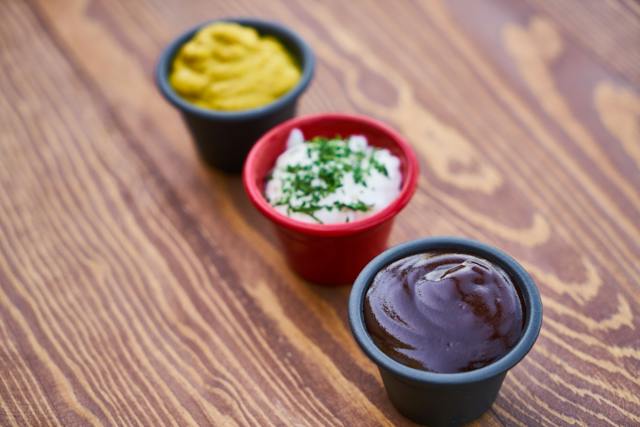Favorite US condiment
Ketchup (or catsup) is a favorite American condiment. We see it and call for it whenever the need arises – from our kitchens to fast-food joints. It seems nearly everybody likes ketchup.
The origins of ketchup come from different but unproven sources
The sweet and tangy red sauce is usually made from tomatoes, with lots of flavorings thrown in – including vinegar, sugar, and an assortment of spices. It’s quite hard to imagine that you can eat your burgers and fries without catsup. As a gesture of acknowledgment to one of the greatest American sauces, it’s fitting that we look back to its pretty interesting history.
Ketchup’s etymology and roots stem from the Far East. The word “ketchup” comes from the Chinese words koe-chap or ke-chap meaning the brine of pickled fish – far from the red sauce we know today, as tomatoes were still unknown to China then. The Chinese used to preserve pickled fish in brine, with a variety of spices. This concoction was brought back by the Dutch and British seamen from their expedition there.
A different source says that in the early 18th century, British explorers brought back a table sauce from their colonial states which would be today’s Malaysia and Singapore. The table sauce was called kechap, which the English modified to the modern word ketchup.
Earliest British and American versions of ketchup
When the British took this idea back to their homeland, they adapted the sauce to their own taste, such as adding mushrooms, anchovies, walnuts and oysters, that brought about the sauce which they called catchup in the late 17th century, which evolved into ketchup in the early 18th century.
There has been some sort of debate as to where the first modern ketchup recipe really existed. According to one source, the world’s first ketchup recipe was printed in the American cookbook The Sugar House Book. Sandy Anderson was purportedly the first creator of the tomato-based sauce. Though another source claims that the first ketchup concoction appeared nearly a century back in London, England, in The Compleat Housewife cookbook.
Whatever the case, the introduction of the tomatoes in the ketchup recipe was important to the evolution of the modern ketchup. At that time, Americans thought of tomatoes as poisonous, as they are closely related to the deadly nightshade. Therefore, people didn’t consider the red, round, juicy tomatoes as edible vegetables until the recipe surfaced.
Because of the many more recipes that periodically followed, the taste of the ketchup was greatly improved, including another recipe from James Mease. Soon tomato ketchup began to be sold, initially by farmers on the local markets. The tomato ketchup was rising in popularity in the United States. You’ve got to give the credit to a man named Jonas Yerks (or Yerkes) who produced and distributed the product all over the country in 1837.
Making ketchup becoming a booming industry
Soon after, companies also started to jump into the ketchup phenomenon. The big ketchup success arrived in 1872 when HJ Heinz introduced tomato ketchup to his line of pickled products, and advertised them with the slogan “Blessed relief for Mother and the other women in the household!” It was an instant success.
By the early 20th century there were over 100 companies who were making tomato ketchup. However, during that time ketchup manufacturers came under fire due to the use of sodium benzoate as a preservative for the ketchup. The debate went on until in 1906 the Pure Food and Drug Act banned sodium benzoate, among the other strict limits it imposed on ketchup manufacturers.
With the growth of the American fast food industry in the 20th century, later innovations on the ketchup were introduced, such as ketchup in small individual packets. Before, ketchup was poured from the pumps into the paper cups; this manner of dispensing ketchup has experienced a resurgence during the early 2000’s, due to the cost and environmental concerns regarding small packets which are made of plastic.
Whether you call it as ketchup, catsup or kechup, one thing’s for sure – this ubiquitous red sauce will be a constant and classic companion to our favorite burgers, fries and hotdogs. You could say that ketchup is an intrinsic part of American cuisine and culture.

